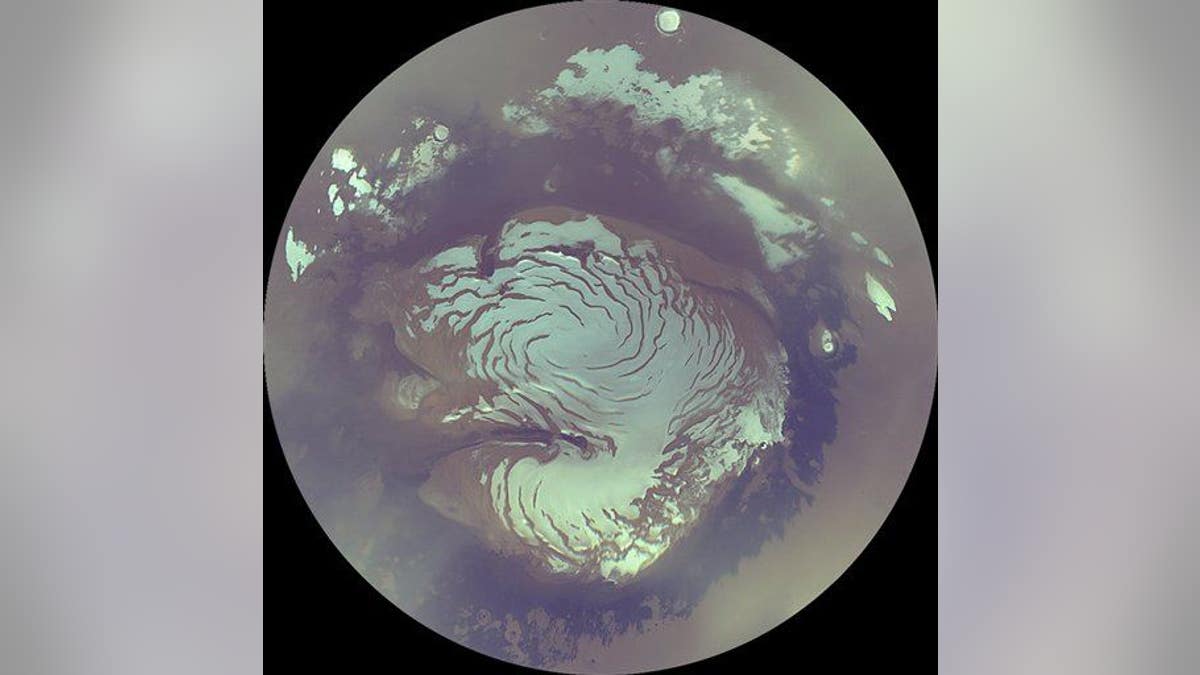
This image provided by NASA shows a view of the north polar ice cap on Mars taken by NASA's Mars Reconnaissance Orbiter. (AP Photo/HO - NASA)
A new study suggests that ancient Mars not only had an ocean, it experienced a tsunami unlike anything we've seen on Earth, reports Cosmos. The study in the Journal of Geophysical Research—Planets identifies a 75-mile-wide crater in the north as the likely source, reports the BBC.
The scientists theorize that an asteroid smashed into the planet 3 billion years ago, creating the Lomonosov crater and triggering the tsunami. Researchers point to "thumbprint terrain"—so named because it resembles ridges on a human thumb—on the planet's parched surface whose geological formations suggest massive water movement, reports the Christian Science Monitor.
"It was a really large-scale, high speed tsunami," says French researcher Francois Gostard. The initial wave from the impact would have been nearly 1,000 feet high, with waves about 300 feet high crashing ashore hours later.
Previous research has suggested that mud flows or glacier movements are responsible for the thumbprint, but "it's very hard to conceive of any other process other than a tsunami" that could have etched out these precise formations, says Gostard.
More From Newser
The existence of an ancient Martian ocean is actually still debated, which is what American co-author Stephen Clifford finds most intriguing about the tsunami evidence. It means "there must have been an ocean present in the northern plains," he says.
"That's the key point here—it indicates that there was a substantial amount of water in residence on the Martian surface." (Maybe even a mile deep?)
This article originally appeared on Newser: Looks Like an Asteroid Once Triggered a Tsunami on Mars
